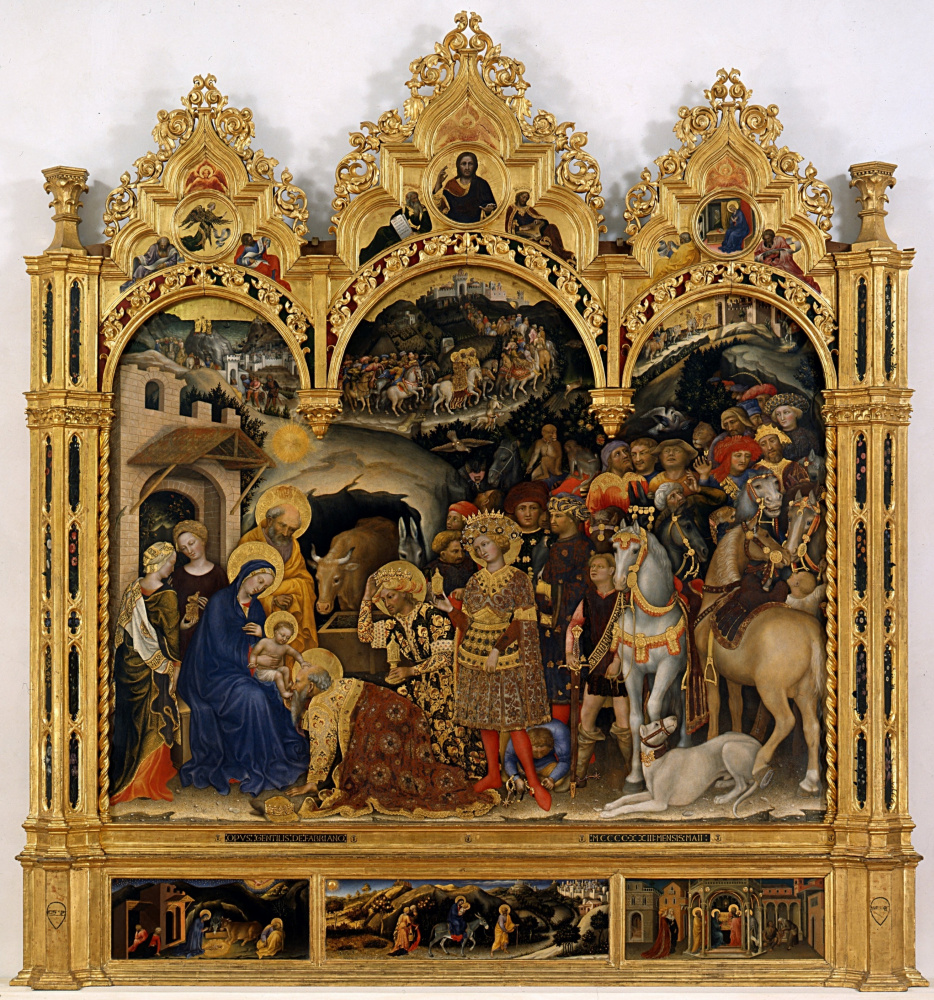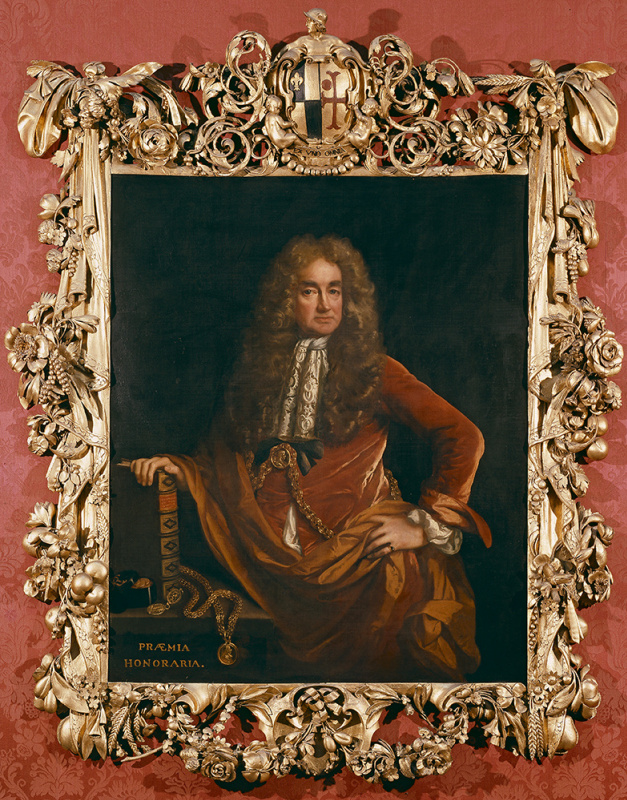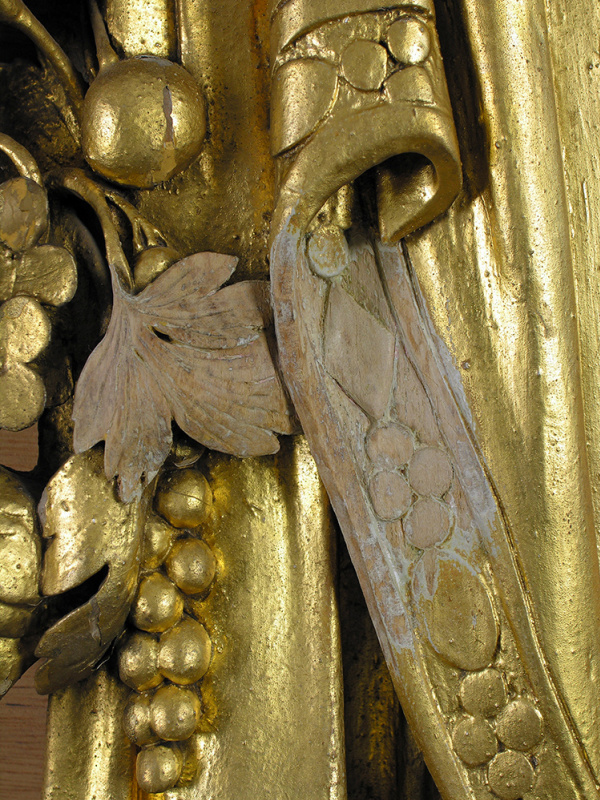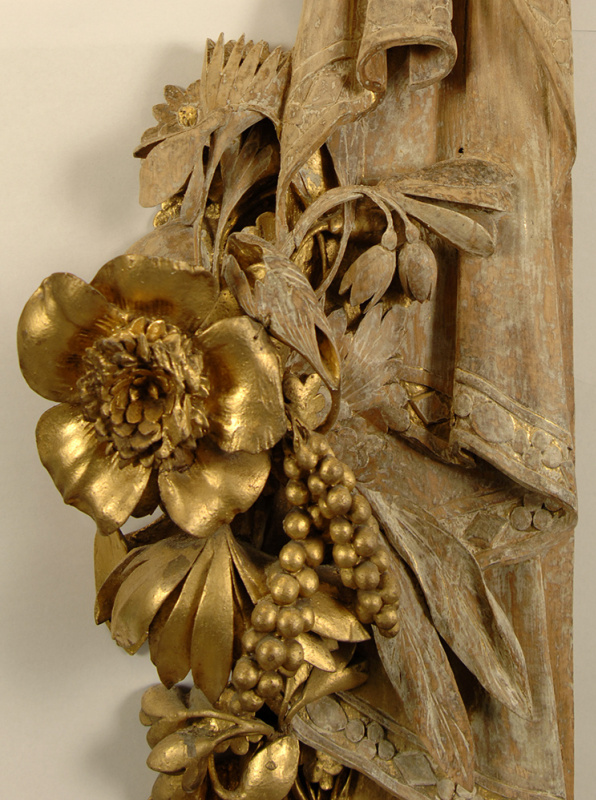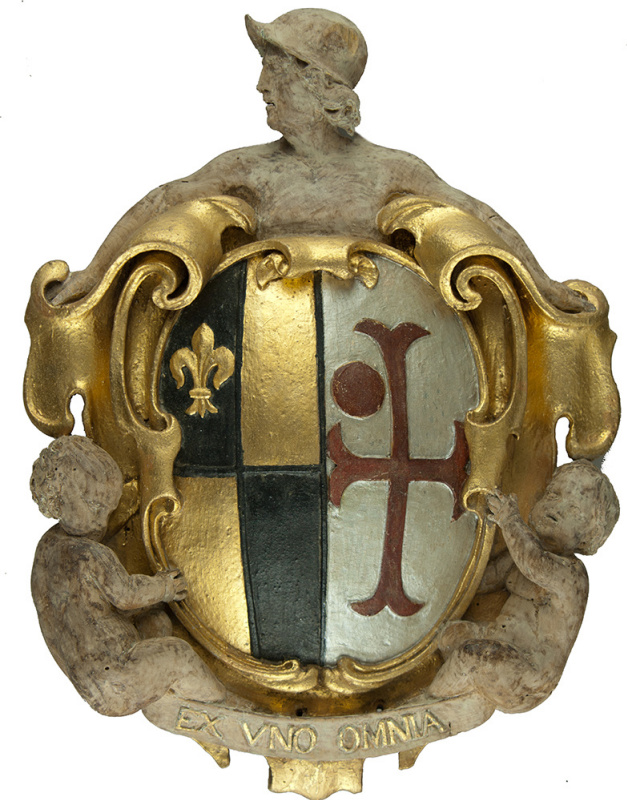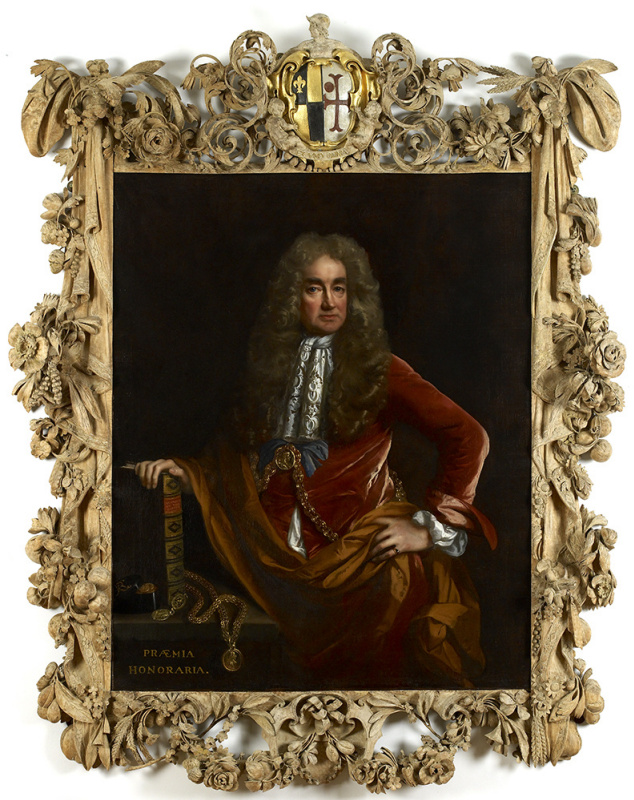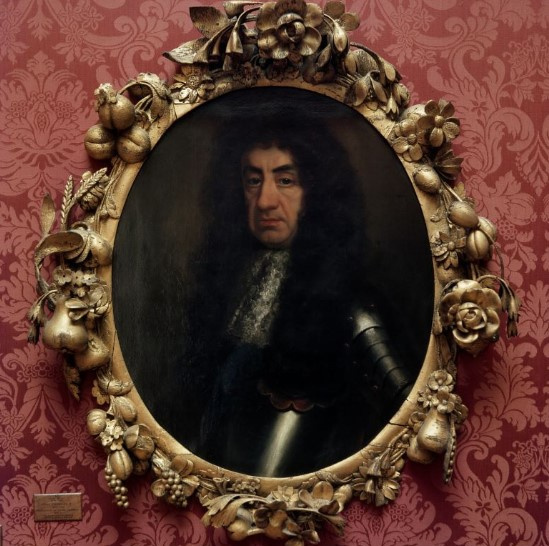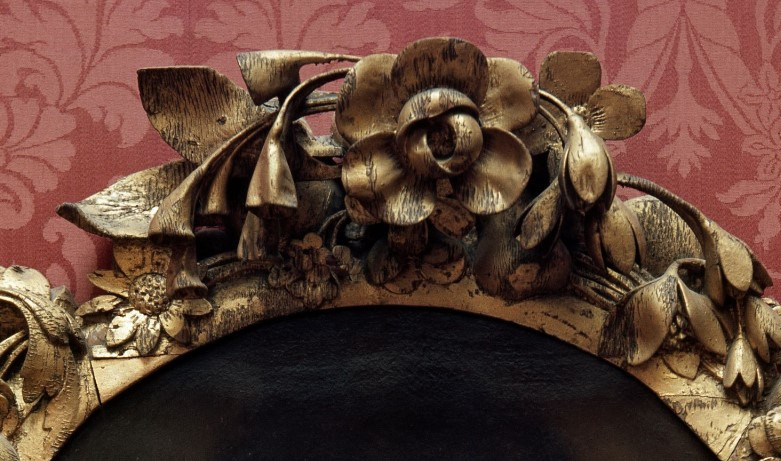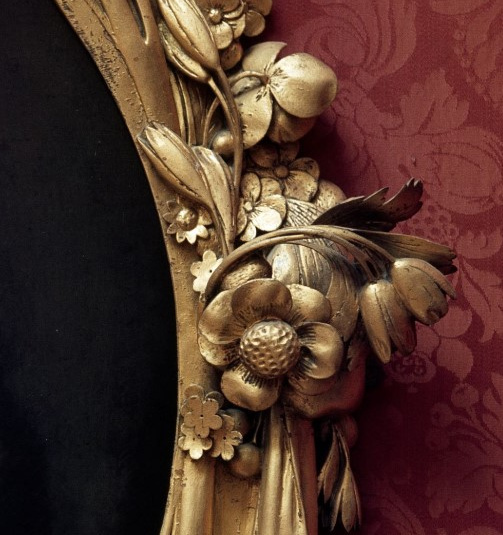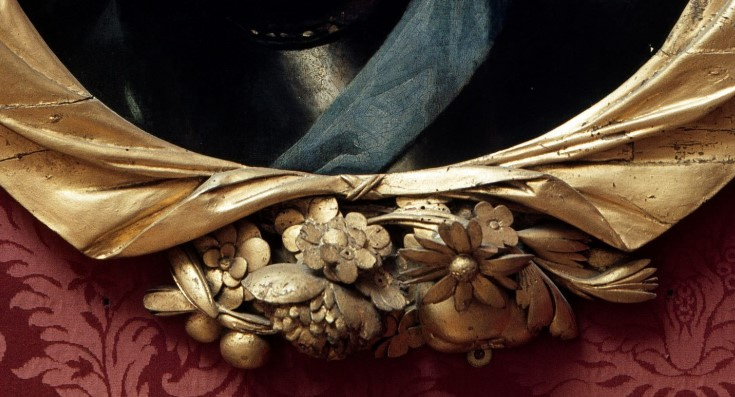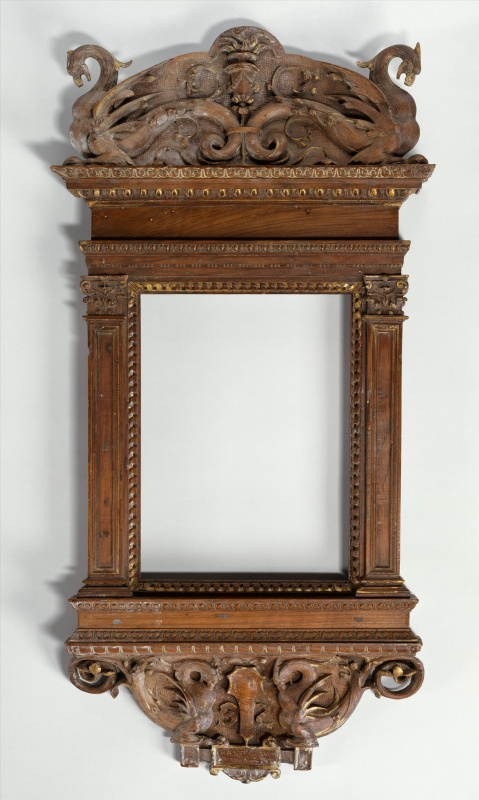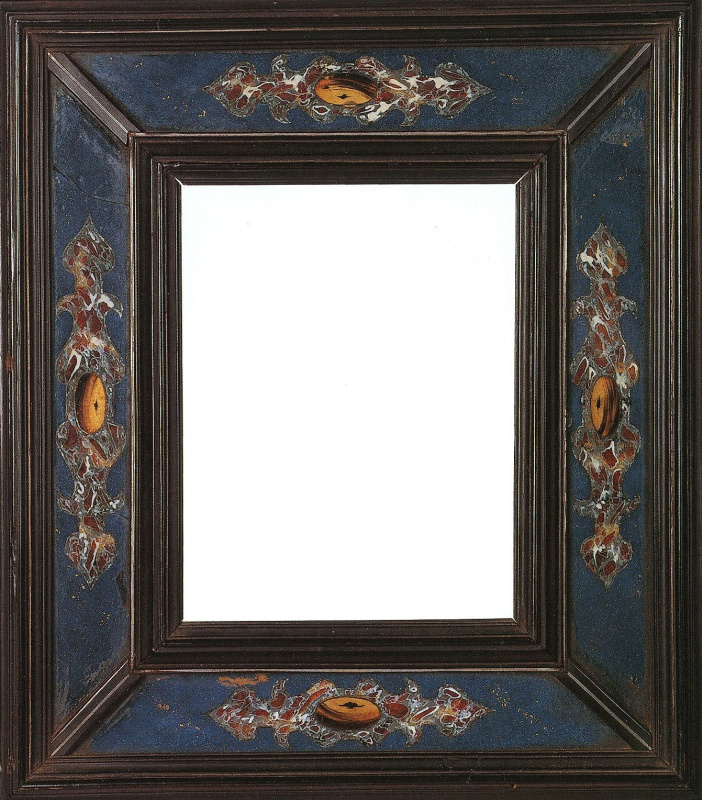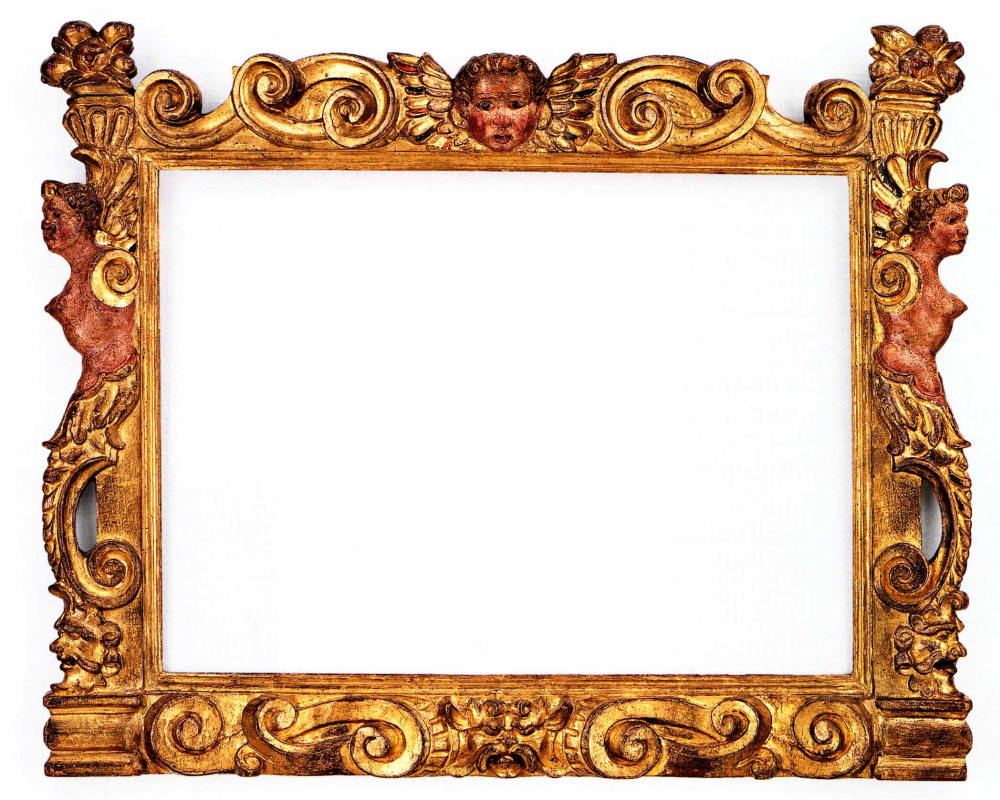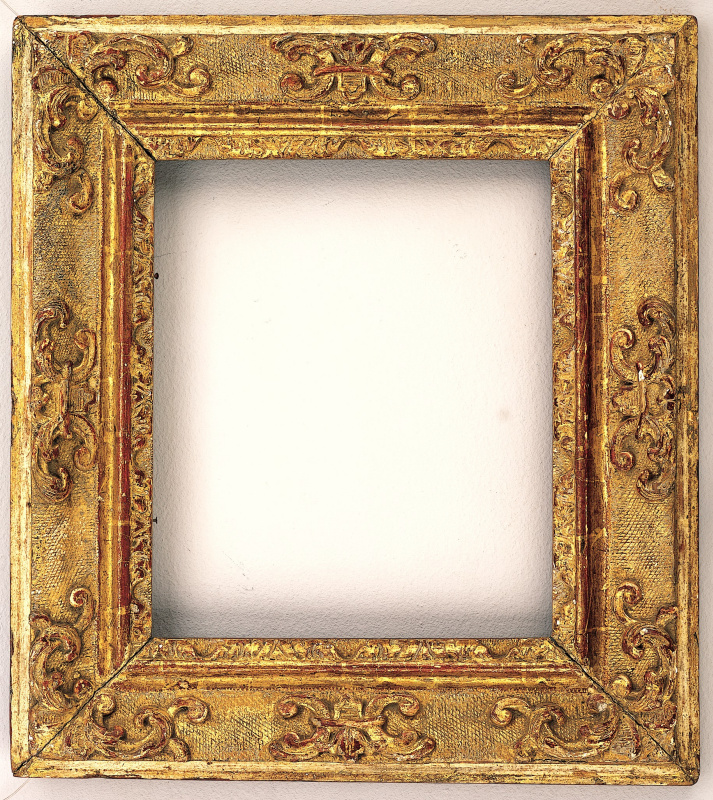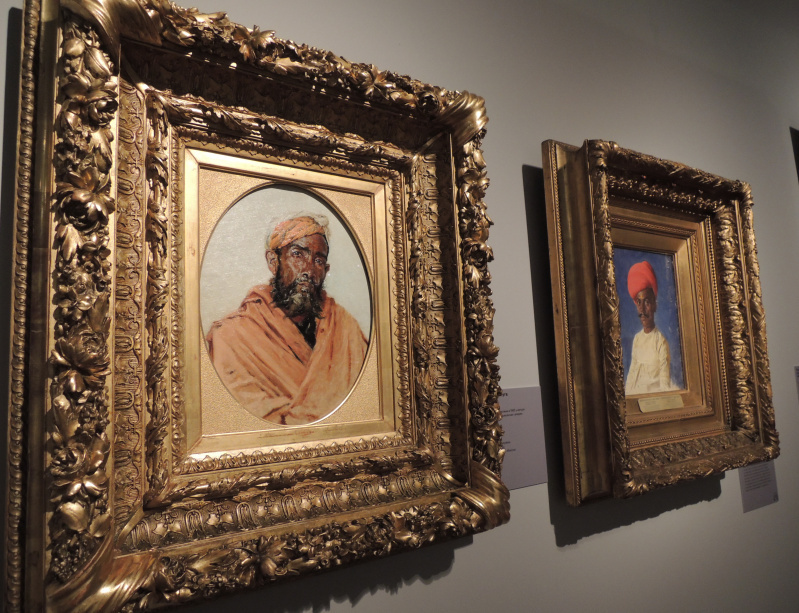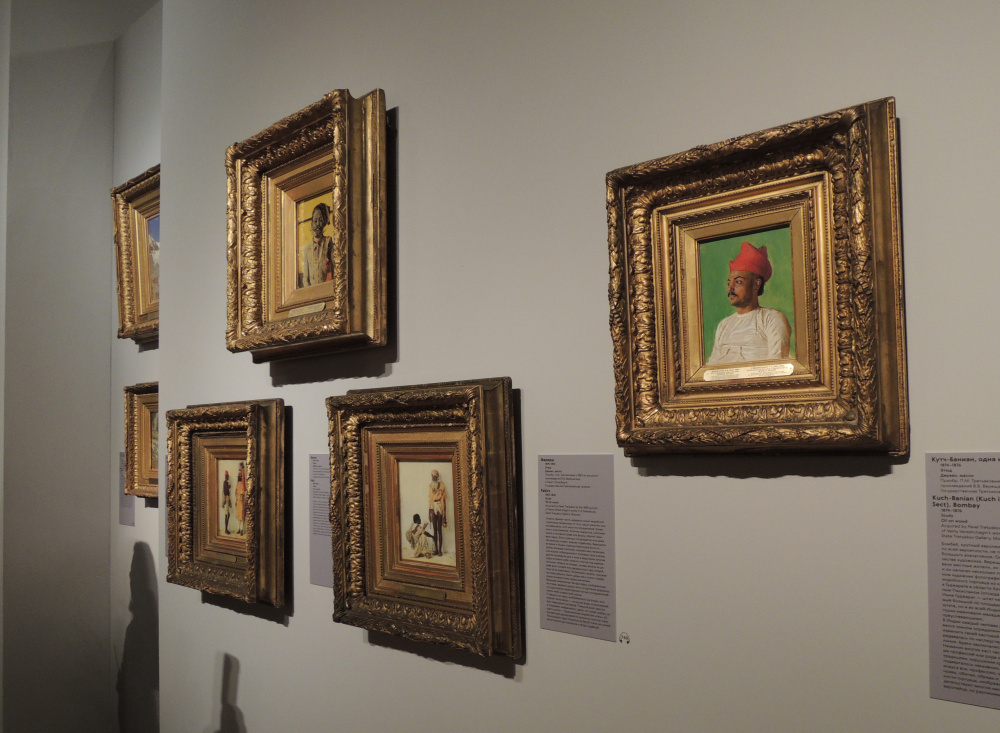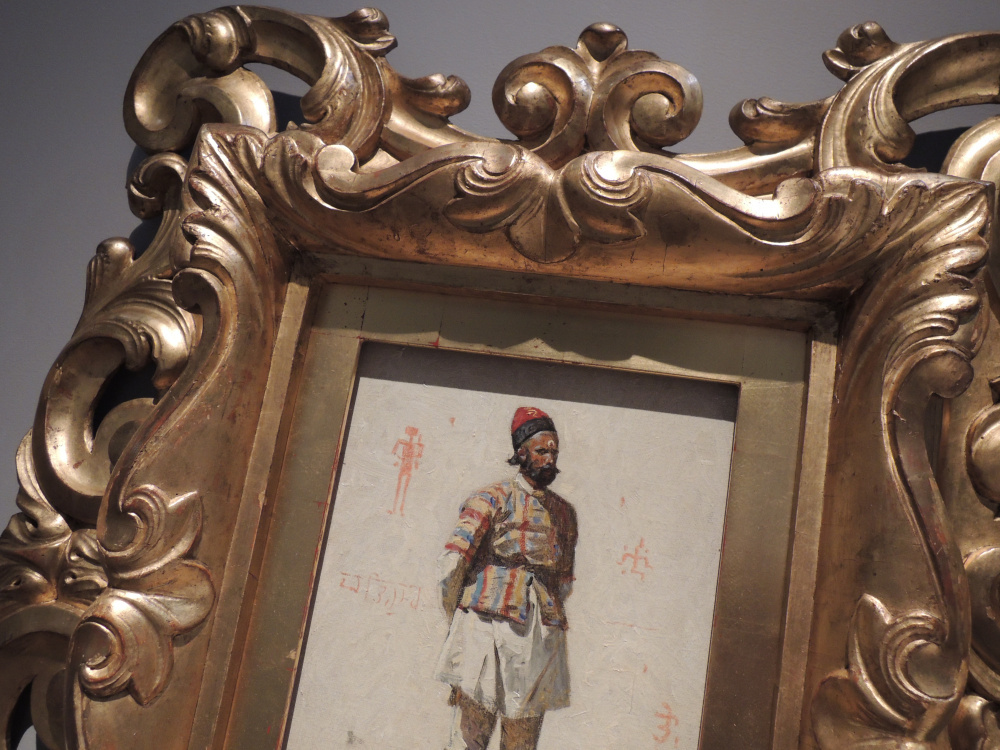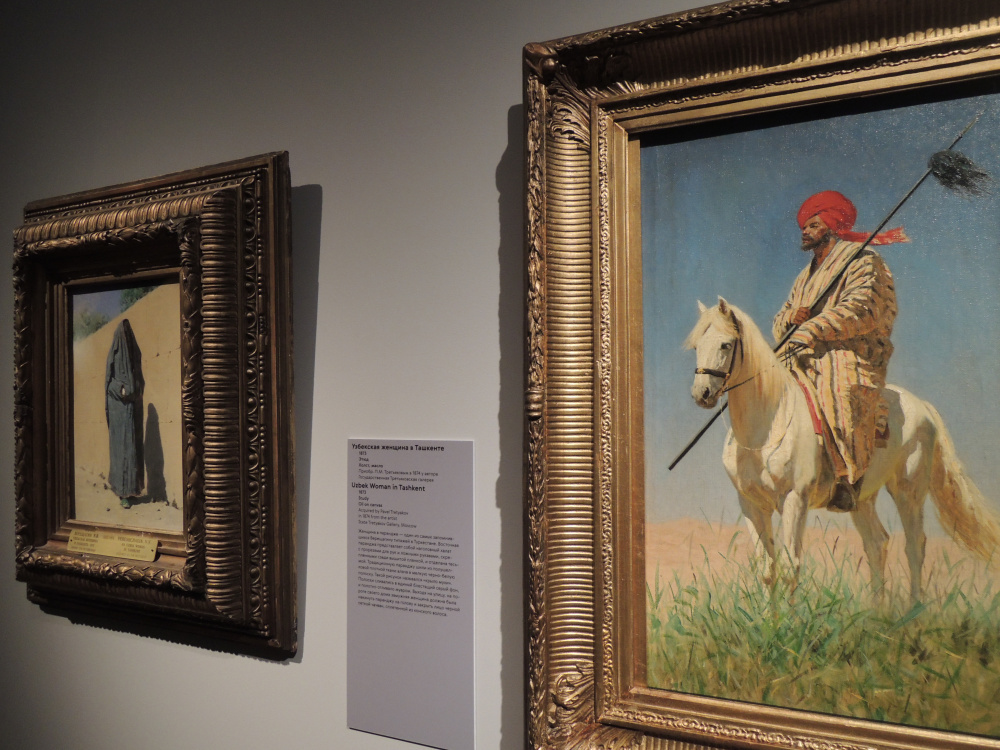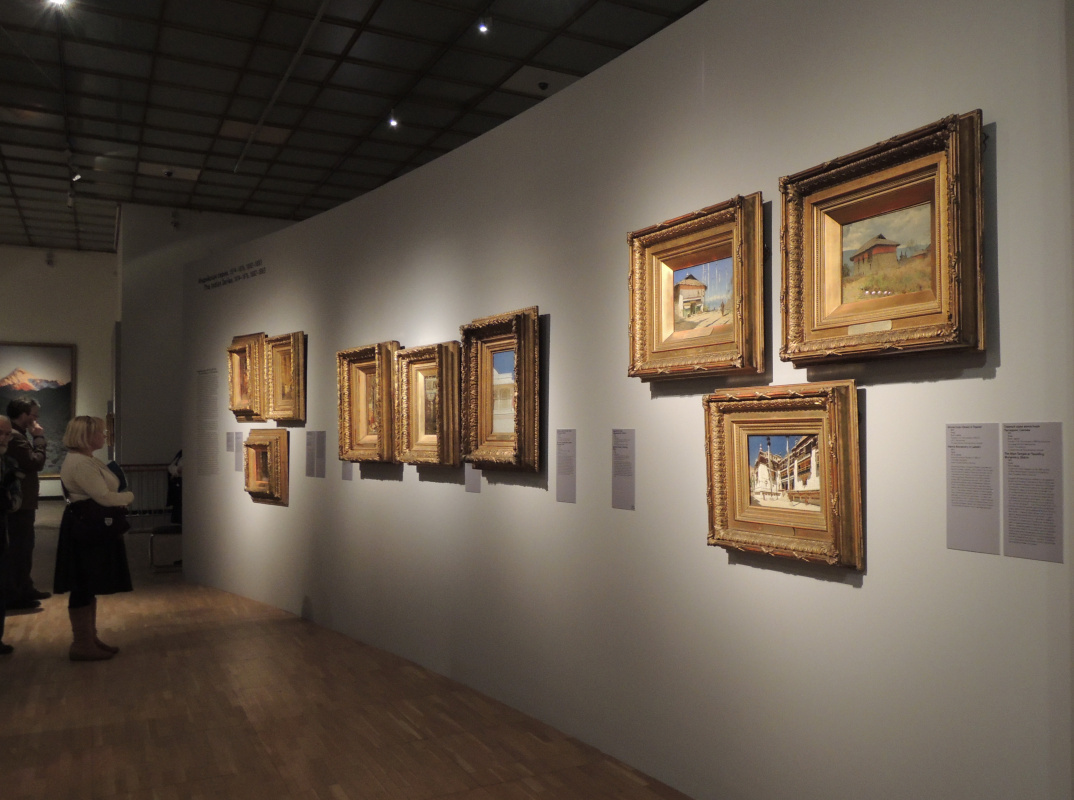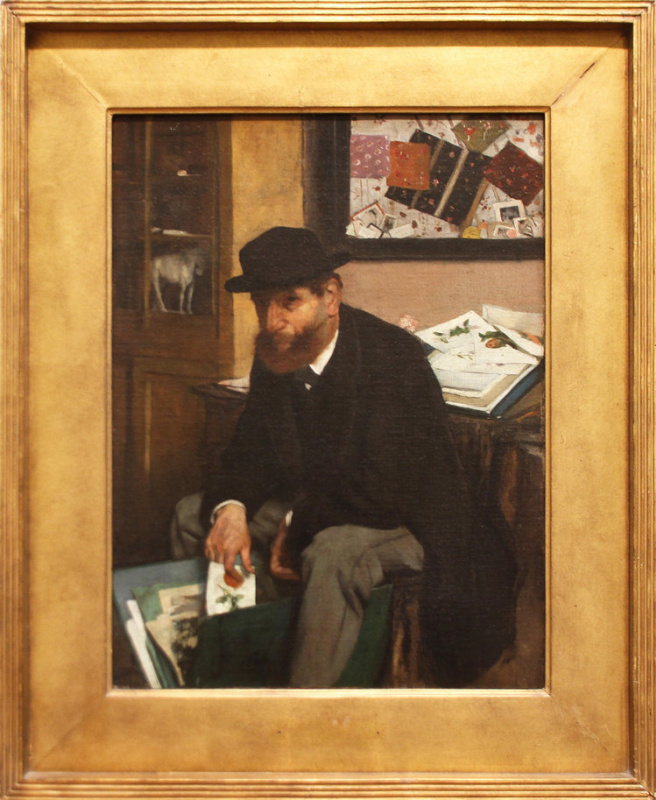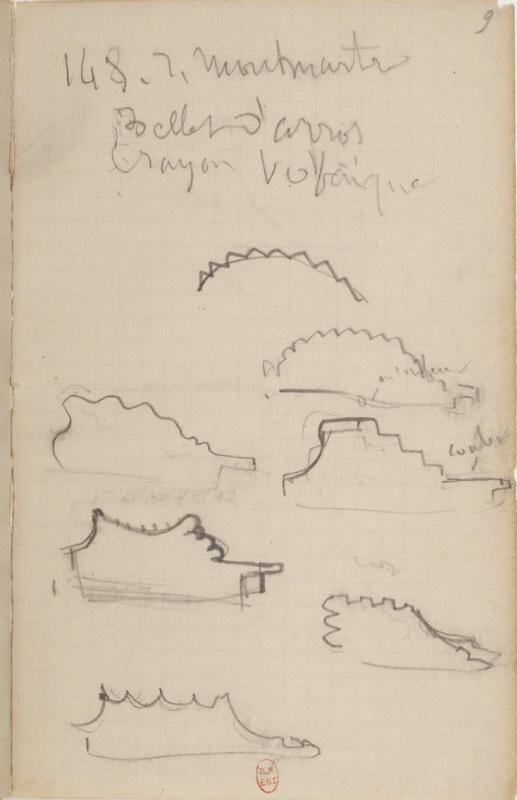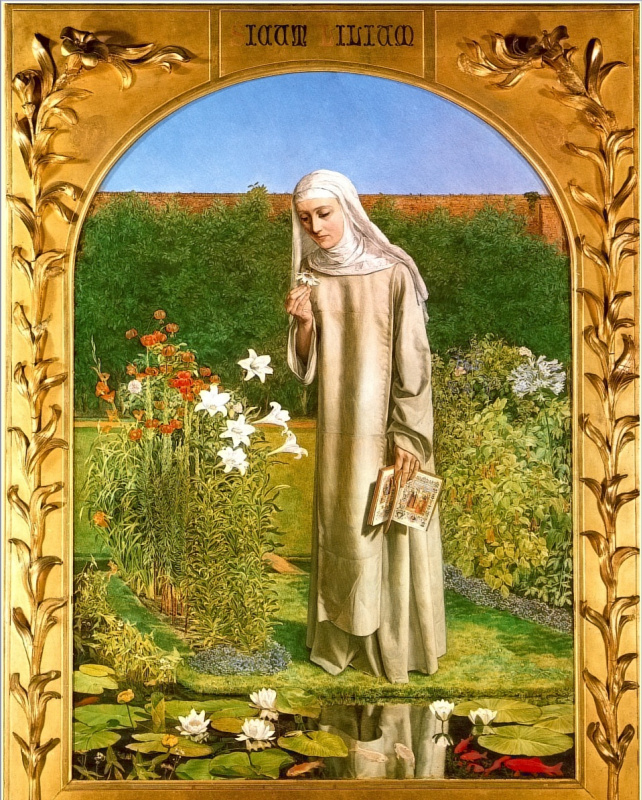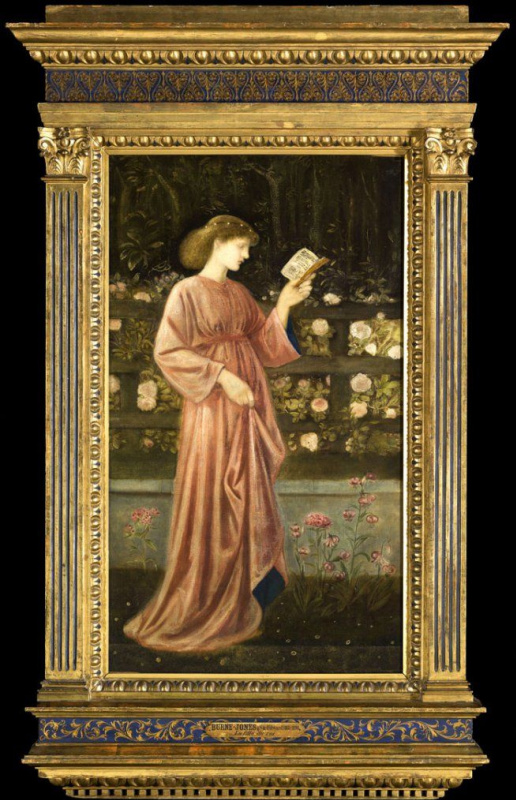Every work of art needs a decent frame
. We talk about the times when cabinet-makers made frames after exclusive drawings, and artists were so scrupulous with the design of their work that they drew sketches for carvers themselves, or even crafted frames on their own.
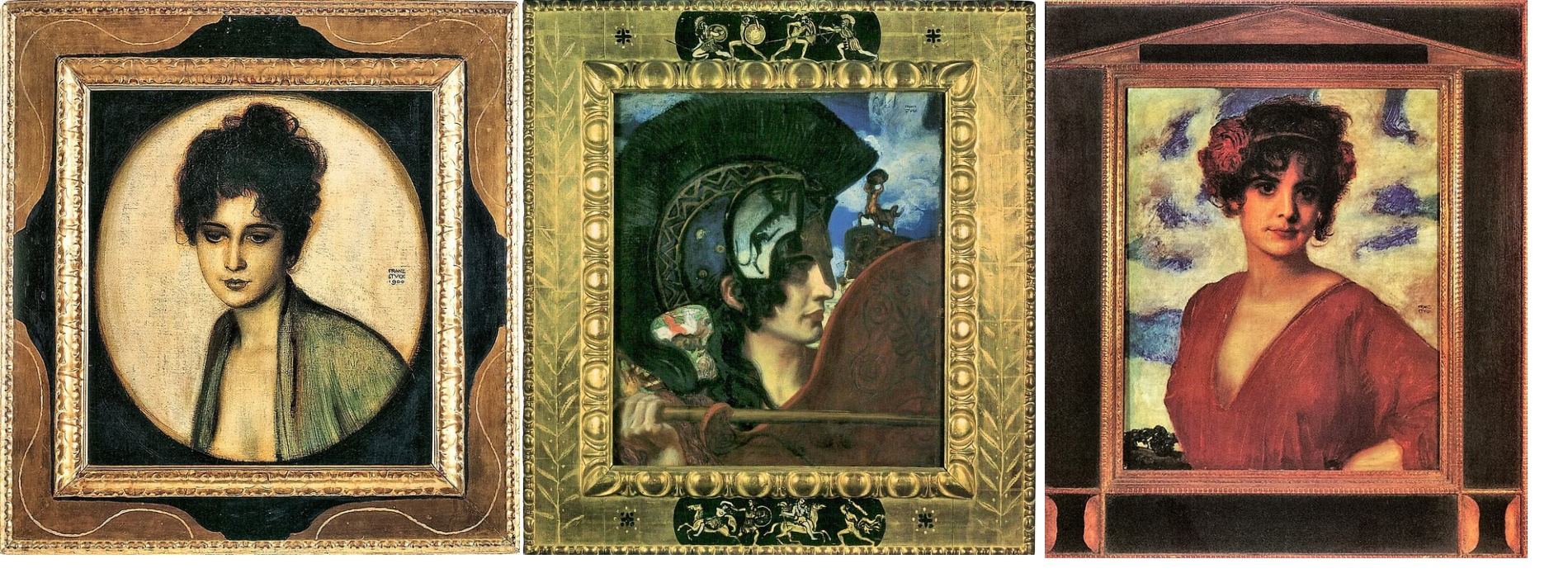
It is fair to say that the idea of a picture frame
as an art object, separate from the painting, but no less significant, was born during the Renaissance
era. In 1423, Palla Strozzi, a banker and one of the richest people in Florence, commissioned the artist Gentile da Fabriano to draw a version of Adoration of the Magi. The composition was staggering. The prototype of the painting of the gilded panel was the image itself. At the same time, da Fabriano separated the frame
from the main work.
The adoration of the Magi
1423, 282×303 cm
Over the next decade, other prominent Florentine artists, including Brunelleschi and Donatello, also displaced the Gothic style and contributed to the development of the idea of designing a picture frame
as a work of art.

The famous Sansovino frames got their name at the end of the 19th century after Jacopo Sansovino (1486−1570), the prominent Italian architect and Renaissance
sculptor, who created the most famous buildings in Venice. The characteristic details of these carved artworks are large fruit garlands, masks, scrolls and cherubs. Their design, made in the early Baroque
style, fully reflects the influence of the characteristic architectural decisions of the late 16th century on the framing of paintings three centuries later. One of the most popular examples of a Sansovino frame
is the framing of the portrait of Girolamo Fracastoro by Titian in the London National Gallery.

Titian. Portrait of Girolamo Fracastoro. 1528. National Gallery, London
A bright page in the picture frame
history is the works by Greenling Gibbons (1648 — 1721), one of the most famous English woodcarvers. The heyday of his work fell on the border of the 17th and 18th centuries: by 1680 Gibbons was already known as the Carver King and performed his work for St. Paul’s Cathedral, Windsor Castle and the house of Count Essex. The most exquisite frames came out of Gibbons' workshops to enframe the best examples of painting. This carver preferred to work with linden wood.
One of Gibbons' most famous works is a carved frame
for the portrait of Elias Ashmole (1617−1692), an English antiquarian who was primarily a famous alchemist and astrologer. Ashmole’s portrait was painted by artist John Riley in 1683. It is believed that a year earlier Gibbons instructed Ashmole to compose a horoscope for him, and the luxurious frame
became his payment for the work.
The frame
makers showed surprising attention to the specific properties of each type of wood. Walnut was appreciated for its rich colour and structural integrity. Craftsmen preferred this wood for frames with small details, or if they wanted to show the exquisite structure of wood fibres. Linden was less expensive, but also suitable for fine carving. Cheaper and softer wood, such as pine and poplar, was used for less important parts of the frame
with simple carvings, or for frames that were gilded or painted.
Another brilliant English woodcarver, Englishman Thomas Chippendale (1718—1779), was famous not only for his furniture, but also for his "The Gentleman And Cabinet-Maker's Director" that he left to his descendants — a classic book with engravings made in his own workshop. As you already understood, this master, who worked in the mid-18th century, preferred to craft mahogany. Samples of the Chippendale frames from this catalogue were reproduced many times by craftsmen and are still popular with those who can afford a handmade carved frame
.
In the photo below: illustrations of picture frames sketch from the Thomas Chippendale’s "The Gentleman And Cabinet-Maker's Director", edition 1762. Source of photo.
In the photo below: illustrations of picture frames sketch from the Thomas Chippendale’s "The Gentleman And Cabinet-Maker's Director", edition 1762. Source of photo.

The carved gilded frame for the mirror in Thomas Chippendale style. The mid-17th century. The frame created by the carver and gilder Paul Petit, who supplied frames for Frederick, Prince of Wales, son of George II. Sold in 2013 at the Sotheby’s auction for 221 thousand dollars.
Over the century, the importance of frames and their decoration continued to grow. In France, the furniture maker Jean-François Oeben (1720—1763), succeeded by his son-in-law, Roger Vandercruse Lacroix, was the most famous in France in this period. These artisans worked with many types of wood — Oeben was known as a master of marquetry, as well as mechanics, which he used in the intricate designs of tables and bureaus. He made magnificent frames for paintings and large mirrors — this symbol of wealth and the upper class of the owner. Recall also that the famous Paris Salons began their work in April 1667. And in order to sell profitably, you have to file profitably! Oeben’s services — and not only his — were popular among dealers. In anticipation of the Salon, the work in the workshops was in full swing, and it happened that the frame
was worth more than the painting itself.

André Tremblin. Coronation portrait of Louis XV. This frame
cost 850 livres, while the picture cost 900 livres.
Venice was also famous for its craftsmen. According to the census of 1773, by the end of the 18th century, 98 carvers worked in 36 workshops, and another 33 workshops and 64 craftsmen specialized in gilding.

Carved Italian gilded wooden frame. Venice. 92×70 cm. Ca. 1770. It was presented at the Sotheby’s auction in 2015 with an estimate of 30—50 thousand pounds. Source.
The cabinetmakers' most popular material was walnut, or rather, the core of walnut trunk, the colour of which varies from grey to reddish-brown. Much depended on the place of growth of the tree. For example, Italian wood has a redder hue and a more complex structure. German craftsmen were very fond of the Caucasian walnut for its dark grey and black shades. French walnut was also very popular due to the peculiarities of its pattern and colours.
In 1990, the Metropolitan held an exhibition entitled The Italian Renaissance Frames, which was entirely devoted to picture frames. In the museum halls, the audience found themselves in a very unusual atmosphere: room by room, only empty frames looked at them from the walls. One of the visitors even raised the alarm: he considered that all the paintings had been stolen! Nevertheless, the exhibition allowed viewers to appreciate the framing of paintings as a separate work of art, which deserves great attention.
Most artists surely paid attention to the frames on their paintings at all times. Artists had to sell their art in an advantageous presentation, in an appropriate frame
, and some of them were so reverent about this moment that they designed frames for their paintings themselves. So, the Raphael's painting in the Hermitage collection is exhibited in a frame made according to the drawing of the artist himself.

Raphael. The Conestabile Madonna. 1504. State Hermitage Museum, St. Petersburg
The grotesque frame was created at the same time as the canvas, and probably according to the design of Raphael himself.
The grotesque frame was created at the same time as the canvas, and probably according to the design of Raphael himself.
The famous battle painter Vasily Vereshchagin was known for taking part in the design of frames for his paintings. Most of his work is framed by very wide, gilded carved frames. Hanged nearby, his canvases merge into a single "golden iconostasis" with faces of the Hindus, Turkmens, Japanese, as well as representatives of the lower layers of the Russian Empire
society, which he portrayed.
"…The frame
must have a harmonious connection with the picture. Therefore, artists choose the frames for their works so carefully. The shapes and tone of the frames always depend on the shapes and tonality of the paintings. Everything that violates the frame
harmony, violates the picture harmony as well…"
Valentin Serov

Henri Matisse. "Moroccan Triptych": "View from the Window. Tangier", "Zorah on the Terrace", "The Casbah Gate". 1912. The modern look.
In his letter to Sergei Schukin, Henri Matisse emphasized the frames he created for the Moroccan Triptych, commissioned by a collector. In a letter dated 19 April 1913, he not only described the composition of the paints used to paint the frames, but also gave advice on their restoration: "…The frames were specially designed for these paintings. They are grey, painted with colour wash. In case there will appear fingerprints on them, the spots can be removed by wiping them with a sponge (a little damp) — this removes the very top layer of paint. If the spots cannot be removed, any decorator would repaint the frames after washing off the grey paint with water to white soil. The grey colour is made up of Spanish white or other powdered white paint, a small amount of black ink and ultramarine blue with gelatine to tack…" Discussing this point, Matisse clearly suggested that the author’s coloristic composition of the triptych must not be changed. However, this advice was not heard, and today the "Moroccan triptych", stored in the Pushkin Museum, is demonstrated in gilded frames.
In his letter to Sergei Schukin, Henri Matisse emphasized the frames he created for the Moroccan Triptych, commissioned by a collector. In a letter dated 19 April 1913, he not only described the composition of the paints used to paint the frames, but also gave advice on their restoration: "…The frames were specially designed for these paintings. They are grey, painted with colour wash. In case there will appear fingerprints on them, the spots can be removed by wiping them with a sponge (a little damp) — this removes the very top layer of paint. If the spots cannot be removed, any decorator would repaint the frames after washing off the grey paint with water to white soil. The grey colour is made up of Spanish white or other powdered white paint, a small amount of black ink and ultramarine blue with gelatine to tack…" Discussing this point, Matisse clearly suggested that the author’s coloristic composition of the triptych must not be changed. However, this advice was not heard, and today the "Moroccan triptych", stored in the Pushkin Museum, is demonstrated in gilded frames.
If this happened with the artwork by Edgar Degas when Degas was still alive, he would have been very angry: according to the art dealer Ambroise Vollard, when Degas saw the collectors who bought his painting to "dress" it in a gilded frame
, he simply took it from the owners. He was so passionate about frames that he even created his own catalogue of mid-19th century frame
profiles. He not only studied frames, but also designed his own models, and left behind drawings of more than 40 original solutions for framing paintings. The artist took into account the direction of light and shadow cast by the frame
, considering the picture not as a plane, but as a single three-dimensional object. All Degas’s frames has no bends, carvings, or curved lines — the artist believed that frames should not affect the spatial perception of his work.
One of the leaders of the German secession, Franz von Stuck, is known not only for his sensual gloomy works, but also for the fact that he personally made original frames for them.
Whereas the "father of Art Nouveau" and the Austrian secession Gustav Klimt has his paintings "dressed" by his brother, artist and jeweller Georg Klimt. The idea of consonance of the picture and frame was drawn from the Pre-Raphaelites . Surprisingly, Gustav Klimt created his early works (The Naked Truth, Athena Pallas) under the influence of the frames that his brother Georg brought to his workshop: the artist came up with a plot in tune with the frame and embodied it on canvas.
Whereas the "father of Art Nouveau" and the Austrian secession Gustav Klimt has his paintings "dressed" by his brother, artist and jeweller Georg Klimt. The idea of consonance of the picture and frame was drawn from the Pre-Raphaelites . Surprisingly, Gustav Klimt created his early works (The Naked Truth, Athena Pallas) under the influence of the frames that his brother Georg brought to his workshop: the artist came up with a plot in tune with the frame and embodied it on canvas.
Judith and Holofernes
1901, 84×42 cm
After we recalled Klimt’s frames, we must mention the Pre-Raphaelites
, who connected the viewer and the picture through a frame in tune with the plot of the artwork. So, the symbol of virginity — lilies — in the Charles Collins' painting Convent Thoughts is repeated in the frame
pattern created especially for this canvas. William Holman Hunt had a symbolic pattern of marigolds (regret) and bells (warning), in the centre — a star as a symbol of redemption on the frame
of his picture The Awakening Conscience.
Englishman Howard Hodgkin (1932—2017), an abstractionist and an outstanding colorist of his generation demonstrates the modern interpretation of the unity of frame and picture.

Howard Hodgkin "Fowerpiece". 2004−2005. Jeremy Lancaster Collection.
However, the most famous frame
of our time is that of the Banksy's Girl with Balloon. The elusive artist built a shredder mechanism with remote control in it. The performance arranged with this frame
took place on 6 October 2018 at the Sotheby’s auction. After the painting was sold at the auction for almost a million pounds, someone — perhaps even Banksy himself — activated the shredder hidden inside the deep frame
. The mechanism began to cut the picture into strips, which caused a real shock among the auction participants.

However, something went wrong: the Girl with Balloon was only half destroyed, and the mechanism stuck. The new owner kept his wits: the picture immediately received a new name — now it is Love is in the Bin and its cost doubled! Below is the video shot by Banksy and his representatives, which shows all the stages of creating the famous shredder frame
and, in fact, the shocking story of the birth of a new, albeit half-rugged, work of modern art.
Being wonderful works of art by cabinet-makers and artists themselves, picture frames are designed to enhance the artistic merit of the picture and create the viewer’s impression from its contemplation. Partly furniture, partly a sculptural work, a well-chosen frame
always draws attention to the composition, colours and structure of the picture, enhancing the overall impression and acting as a portal leading the viewer to the world of the artwork.
Title illustration: Franz von Stuck, collage
(from left to right): Portrait of Frau Feez, Fighting Amazon, Lady in Red.






